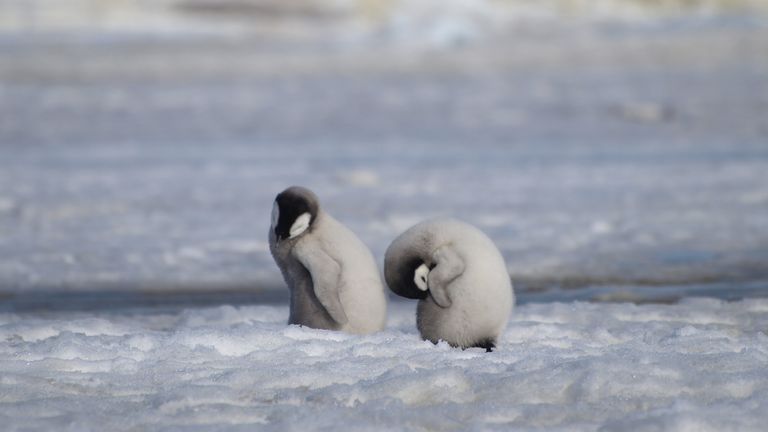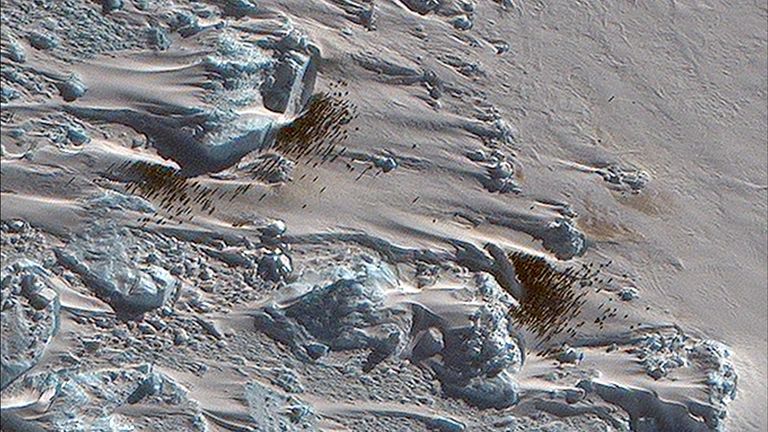Scientists have discovered a new colony of emperor penguins in Antarctica from space using satellite mapping.
The habitat of 500 birds is identified by stains of penguin droppings, which contrast with the pure white snow and rocks.
A site at Verleger Point in West Antarctica has been announced to commemorate Penguin Awareness Day.
This brings the total number of known emperor penguin breeding colonies around the continent’s coastline to 66, according to the British Antarctic Survey (BAS).
Scientists examine photos from the European Space Agency’s Copernicus Sentinel 2 satellite mission.
They compared these images to high-resolution photos taken by MAXAR WorldView3, said to be the world’s most advanced Earth observation satellite.
Dr Peter Fratwell, lead author of the study, said: “This is an exciting discovery. New satellite imagery of Antarctica’s coastline has allowed us to find many new colonies.”
But he added: “While this is good news, like many of the sites discovered recently, this colony is small and in an area that has been severely affected by recent sea ice loss.”
For the past 15 years, BAS researchers have been scouring satellite images of penguin droppings to find new habitats.
Scientists say half of all known colonies have been discovered through satellite imagery.
Emperor penguins are the largest of 18 flightless bird species, measuring about 1.2 meters (about 4 feet) in length.
They require sea ice to reproduce and typically live in icy climates with temperatures as low as -60 degrees Celsius.
They are often located in remote and inaccessible areas, which makes them very difficult to study.
The species is particularly vulnerable to loss of sea ice, which is projected to decline due to climate change.
read more:
Savage penguins among Comedy Wildlife Photography Award finalists
Prehistoric giant penguin species identified from fossils found by New Zealand schoolchildren
One of world’s oldest penguins dies at San Francisco Zoo at 40
The BAS warns that recent projections suggest that 80% of bee colonies will be endangered by the end of the century – meaning populations cannot be maintained.
The research was paid for by science funding body UKRI-NERC, with funding also provided by conservation charity WWF, as wild animals from space project.
Under the leadership of Dr Fretwell, the project also uses satellite technology to track and monitor walruses, whales, seals and albatrosses.

